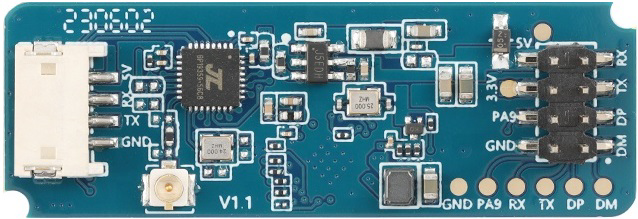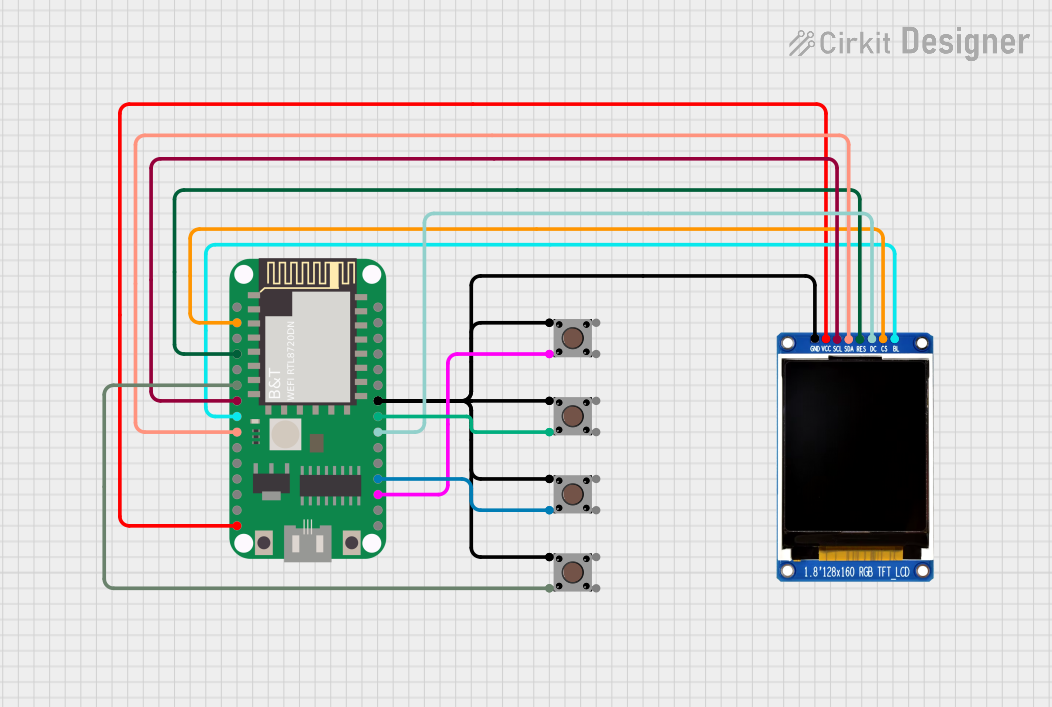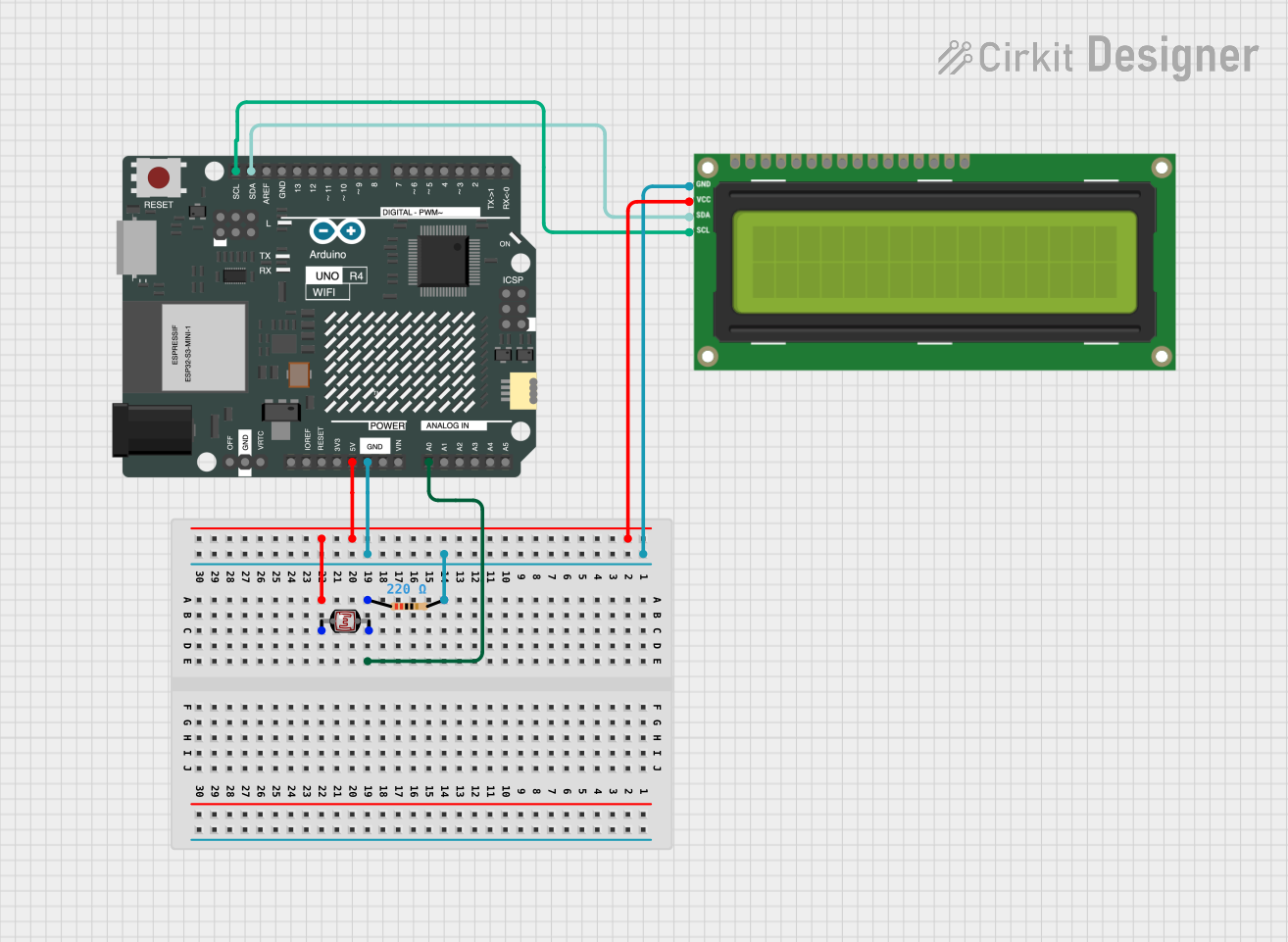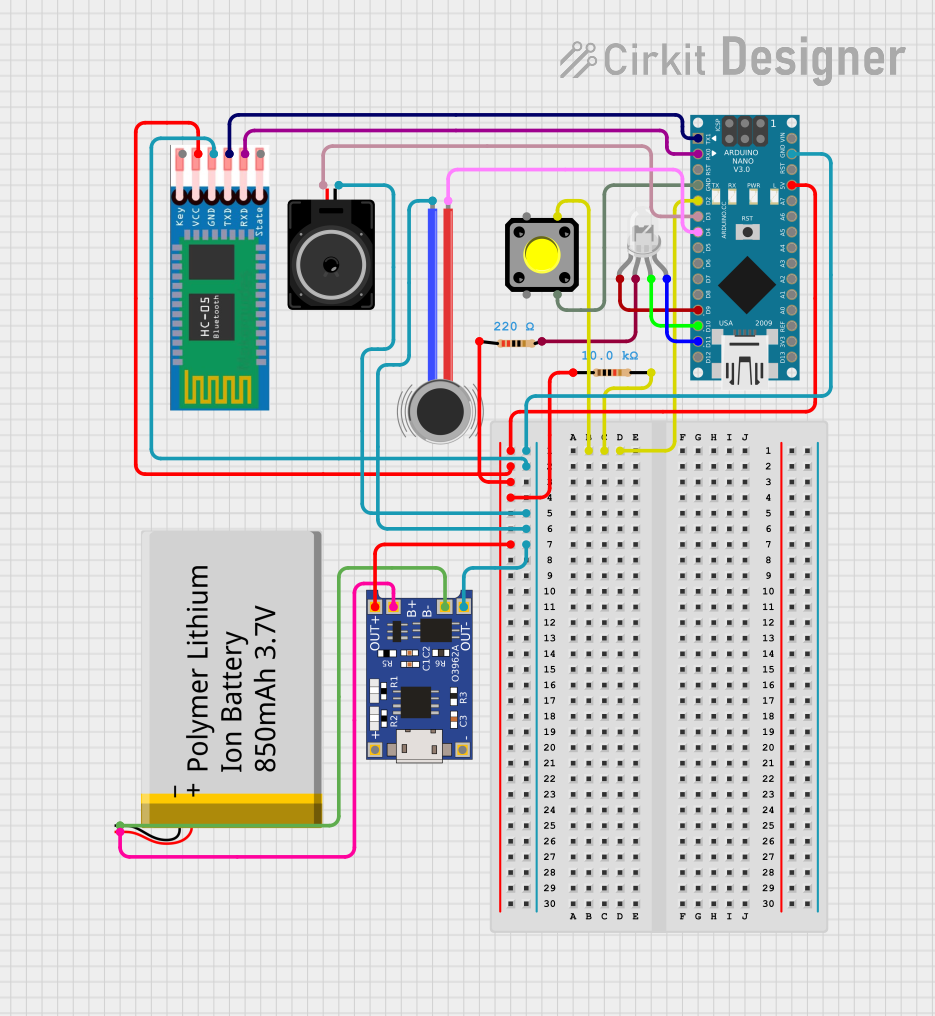
How to Use HLK LD2450: Examples, Pinouts, and Specs

 Design with HLK LD2450 in Cirkit Designer
Design with HLK LD2450 in Cirkit DesignerIntroduction
The HLK LD2450 is a compact and efficient AC-DC power supply module manufactured by Hi-Link. It is designed to convert a wide range of AC input voltages (85-265V AC) into a stable 5V DC output, making it ideal for powering low-power electronic devices. This module is widely used in IoT devices, home automation systems, embedded systems, and other applications requiring a reliable and compact power source.
Explore Projects Built with HLK LD2450

 Open Project in Cirkit Designer
Open Project in Cirkit Designer
 Open Project in Cirkit Designer
Open Project in Cirkit Designer
 Open Project in Cirkit Designer
Open Project in Cirkit Designer
 Open Project in Cirkit Designer
Open Project in Cirkit DesignerExplore Projects Built with HLK LD2450

 Open Project in Cirkit Designer
Open Project in Cirkit Designer
 Open Project in Cirkit Designer
Open Project in Cirkit Designer
 Open Project in Cirkit Designer
Open Project in Cirkit Designer
 Open Project in Cirkit Designer
Open Project in Cirkit DesignerCommon Applications and Use Cases
- Powering microcontrollers (e.g., Arduino, ESP8266, ESP32)
- IoT devices and smart home systems
- Low-power sensors and modules
- Industrial control systems
- Consumer electronics
Technical Specifications
The HLK LD2450 is designed to provide stable and efficient power conversion. Below are its key technical specifications:
| Parameter | Value |
|---|---|
| Input Voltage Range | 85-265V AC |
| Output Voltage | 5V DC |
| Output Current | 0-450mA |
| Output Power | 2.25W |
| Efficiency | ≥ 70% |
| Ripple and Noise | ≤ 120mV |
| Operating Temperature | -25°C to +70°C |
| Storage Temperature | -40°C to +85°C |
| Protection Features | Over-voltage, Over-current, Short-circuit |
| Dimensions | 35mm x 18mm x 15mm |
| Weight | ~10g |
Pin Configuration and Descriptions
The HLK LD2450 module has six pins for input and output connections. The table below describes each pin:
| Pin Number | Pin Name | Description |
|---|---|---|
| 1 | AC IN (L) | Live wire input for AC voltage (85-265V AC) |
| 2 | AC IN (N) | Neutral wire input for AC voltage |
| 3 | NC | Not connected (leave unconnected) |
| 4 | GND | Ground for DC output |
| 5 | +5V | 5V DC output |
| 6 | NC | Not connected (leave unconnected) |
Usage Instructions
How to Use the HLK LD2450 in a Circuit
Connect the AC Input:
- Connect the AC IN (L) pin to the live wire of the AC power source.
- Connect the AC IN (N) pin to the neutral wire of the AC power source.
- Ensure proper insulation and safety precautions when working with high-voltage AC.
Connect the DC Output:
- Connect the GND pin to the ground of your circuit.
- Connect the +5V pin to the 5V input of your device or circuit.
Mounting:
- Secure the module on a PCB or enclosure to prevent movement or accidental contact with other components.
Testing:
- Verify the output voltage using a multimeter before connecting it to your device.
Important Considerations and Best Practices
- Safety First: Always handle the module with care when working with AC voltage. Ensure proper insulation and avoid touching the module while it is powered.
- Load Requirements: Do not exceed the maximum output current of 450mA to prevent damage to the module.
- Heat Dissipation: Ensure adequate ventilation around the module to prevent overheating, especially in high-temperature environments.
- Isolation: If required, use an optocoupler or relay to isolate the module from sensitive circuits.
Example: Using HLK LD2450 with Arduino UNO
The HLK LD2450 can be used to power an Arduino UNO by providing a stable 5V DC supply. Below is an example circuit and code to blink an LED using the Arduino UNO powered by the HLK LD2450.
Circuit Connections
- Connect the AC IN (L) and AC IN (N) pins of the HLK LD2450 to the AC power source.
- Connect the +5V pin of the HLK LD2450 to the 5V pin of the Arduino UNO.
- Connect the GND pin of the HLK LD2450 to the GND pin of the Arduino UNO.
- Connect an LED to pin 13 of the Arduino UNO with a 220-ohm resistor in series.
Arduino Code
// Simple LED Blink Example
// This code blinks an LED connected to pin 13 of the Arduino UNO.
void setup() {
pinMode(13, OUTPUT); // Set pin 13 as an output pin
}
void loop() {
digitalWrite(13, HIGH); // Turn the LED on
delay(1000); // Wait for 1 second
digitalWrite(13, LOW); // Turn the LED off
delay(1000); // Wait for 1 second
}
Troubleshooting and FAQs
Common Issues and Solutions
No Output Voltage:
- Cause: Incorrect AC input connections or no AC power.
- Solution: Verify the AC input connections and ensure the power source is active.
Output Voltage Too Low or Unstable:
- Cause: Exceeding the maximum load current or poor connections.
- Solution: Reduce the load to within the module's specifications and check all connections.
Module Overheating:
- Cause: Insufficient ventilation or high ambient temperature.
- Solution: Improve ventilation around the module or use a heat sink if necessary.
Short Circuit Protection Triggered:
- Cause: A short circuit on the output side.
- Solution: Disconnect the load, check for shorts, and reconnect after resolving the issue.
FAQs
Q1: Can the HLK LD2450 be used with a 3.3V device?
A1: No, the HLK LD2450 provides a fixed 5V output. You will need a voltage regulator or level shifter to step down the voltage to 3.3V.
Q2: Is the HLK LD2450 suitable for outdoor use?
A2: The module is not weatherproof. If used outdoors, it must be enclosed in a weatherproof housing.
Q3: Can I use the HLK LD2450 to power a motor?
A3: The module is not designed for high-current applications like motors. Use a dedicated motor driver or power supply for such applications.
Q4: What happens if the input voltage exceeds 265V AC?
A4: The module may fail or get damaged. Always ensure the input voltage is within the specified range (85-265V AC).